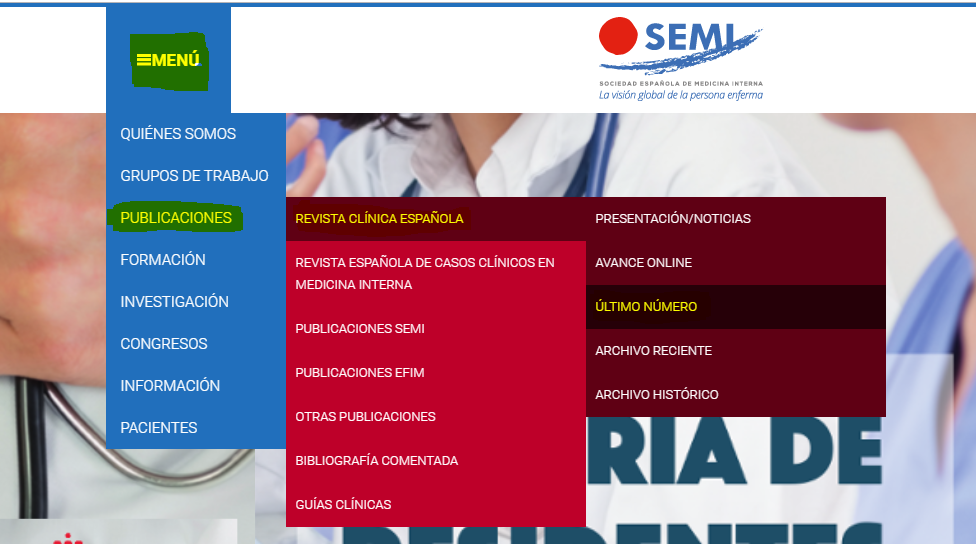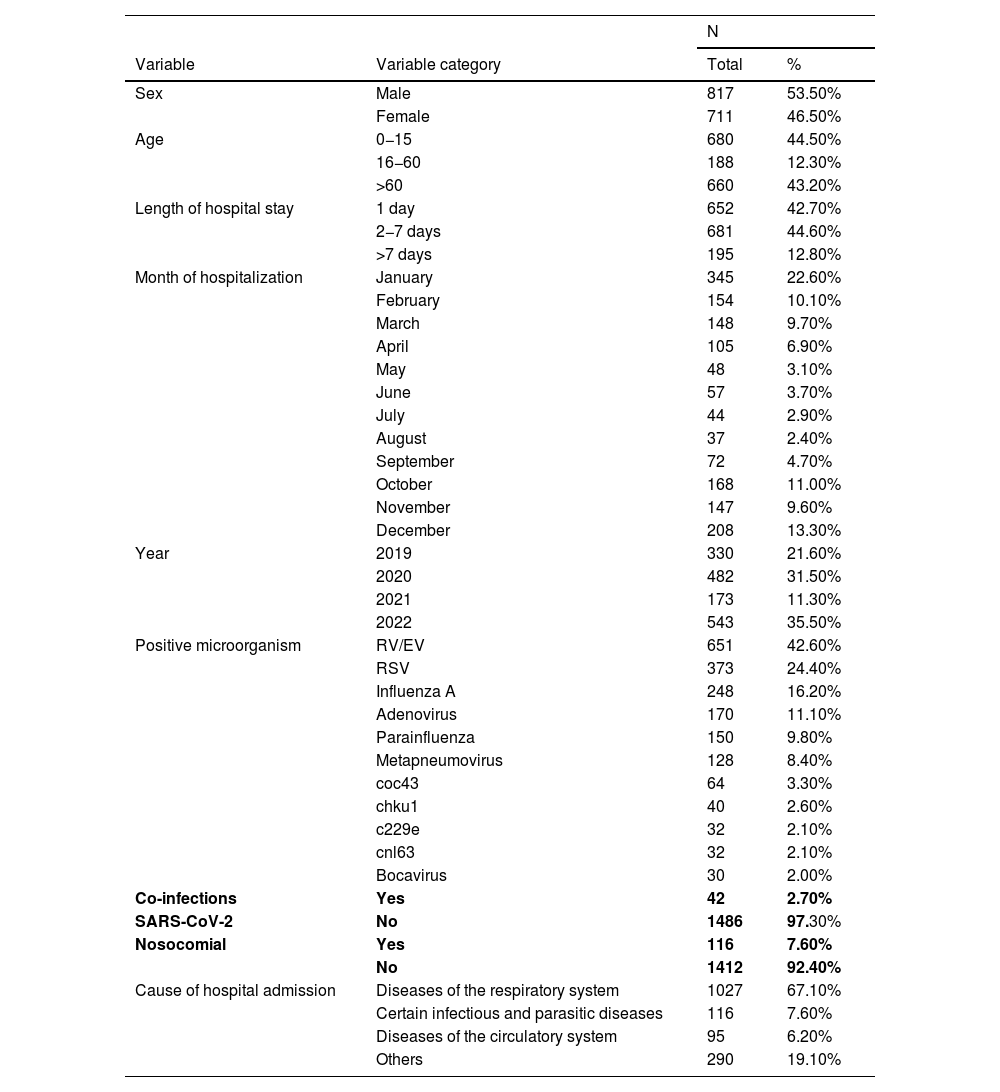Rhinovirus/enterovirus (RV/EV), commonly known for causing mild colds, has emerged as a significant cause of hospitalization. The objective of the study is to analyze the characteristics of patients hospitalized for viral respiratory infections, with an emphasis on RV/EV.
MethodologyThis retrospective study was conducted between 2019 and 2022 at the University Clinical Hospital of Valladolid. Data from 1,528 cases were analyzed, sourced from medical records and microbiological tests (Biofire Respiratory y NxTAG respiratory panel).
ResultsRV/EV was the most common respiratory virus (42.6%). There was a slight predominance of cases in males. 44.6% had a hospital stay of 2–7 days. The average hospitalization incidence was 3 per 1,000 adults per year. Children aged 0–15 years are at higher risk of RV/EV infection, with a 1.5 times higher probability in single infections (OR 1.496; 95% CI 1.147−1.952; p = 0.003), 7 times in coinfections with other respiratory viruses (OR 6.887; 95% CI 3.928–12.045; p < 0.01), and 8 times in coinfections with RSV (OR 8.580; 95% CI 3.866−19.041; p < 0.01). RV/EV is associated with a higher risk of asthma exacerbation (OR 2.545; 95% CI 1.336−4.851; p = 0.005) and COPD exacerbation (OR 1.781; 95% CI 1.022−3.103; p = 0.042), but a lower probability of bronchiolitis (OR 0.236; 95% CI 0.117−0.474; p < 0.01).
ConclusionThis study identifies RV/EV as the main respiratory virus in hospitalized patients, with a greater impact on those under 15 years and over 60 years. Seasonality and the coexistence of multiple viruses complicate its behaviour. These findings underscore the importance of preventive strategies and the need for continued research on its health impact.
El rinovirus/enterovirus (RV/EV), conocido comúnmente por causar resfriados leves, ha emergido como una causa significativa de hospitalización. El objetivo del estudio es analizar las características de los pacientes hospitalizados por infecciones respiratorias virales, con énfasis en RV/EV.
MetodologíaEste estudio retrospectivo, realizado entre 2019 y 2022 en el Hospital Clínico Universitario de Valladolid. Se analizaron datos de 1.528 casos, procedentes de historias clínicas y pruebas microbiológicas (Biofire Respiratory y NxTAG respiratory panel).
ResultadosEl RV/EV fue el virus respiratorio más común (42,6%). Leve predominio de casos en hombres. Un 44,6% presentaron una estancia hospitalaria de 2 a 7 días. La incidencia media de hospitalización fue 3/1000 adultos/año. Los niños de 0 a 15 años presentan mayor riesgo de infección por RV/EV, con una probabilidad 1,5 veces mayor en infecciones únicas (OR 1,496; IC95% 1,147−1,952; p = 0,003), 7 veces en coinfecciones con otros virus respiratorios (OR 6,887; IC95% 3,928−12,045; p < 0,01) y 8 veces en coinfecciones con VRS (OR 8,580; IC95% 3,866−19,041; p < 0,01). El RV/EV se asocia con mayor riesgo de reagudización asmática (OR 2,545; IC95% 1,336−4,851; p = 0,005) y exacerbación de EPOC (OR 1,781; IC95% 1,022−3,103; p = 0,042), pero menor probabilidad de bronquiolitis (OR 0,236; IC95% 0,117−0,474; p < 0,01).
ConclusiónEste estudio resalta al RV/EV como el principal virus respiratorio en hospitalizados, con mayor impacto en menores de 15 años y mayores de 60. La estacionalidad y la coexistencia de múltiples virus complican su comportamiento. Estos hallazgos subrayan la importancia de estrategias preventivas y la necesidad de seguir investigando su impacto sanitario.
Article
Diríjase desde aquí a la web de la >>>FESEMI<<< e inicie sesión mediante el formulario que se encuentra en la barra superior, pulsando sobre el candado.

Una vez autentificado, en la misma web de FESEMI, en el menú superior, elija la opción deseada.

>>>FESEMI<<<












